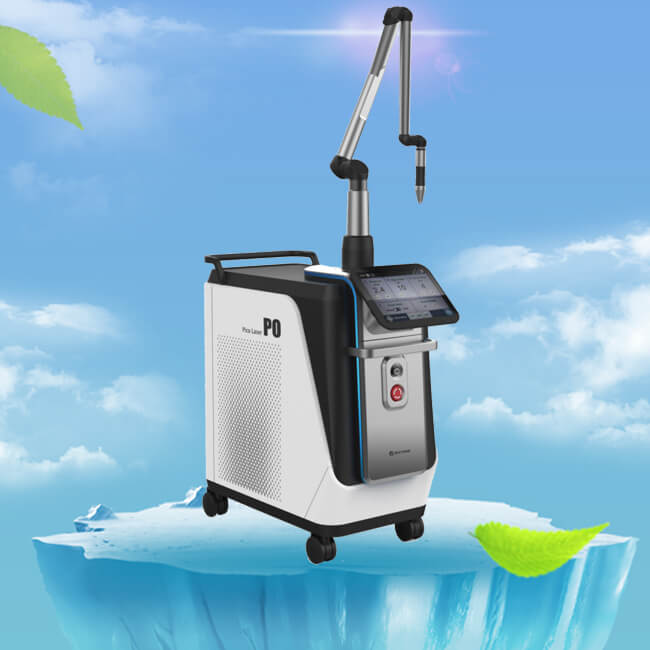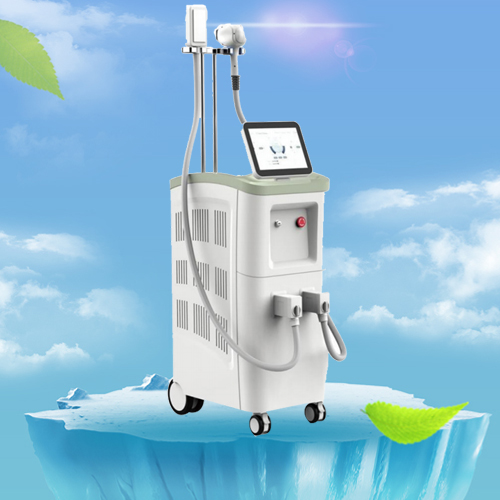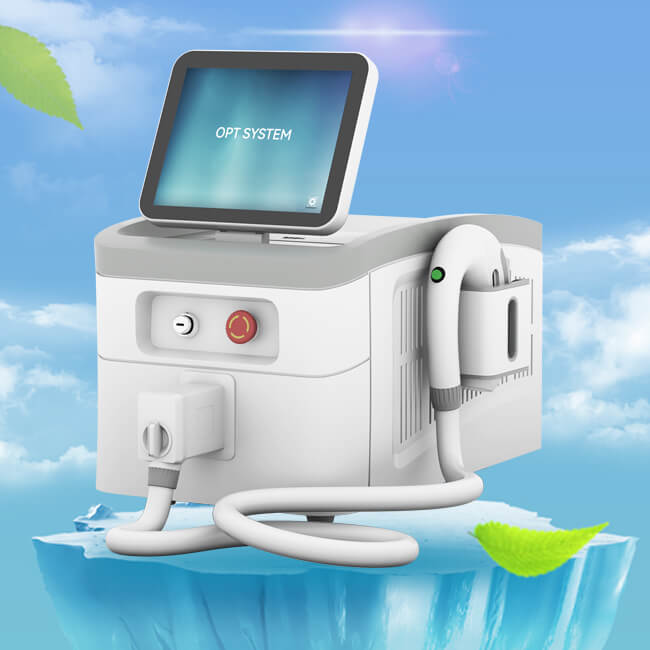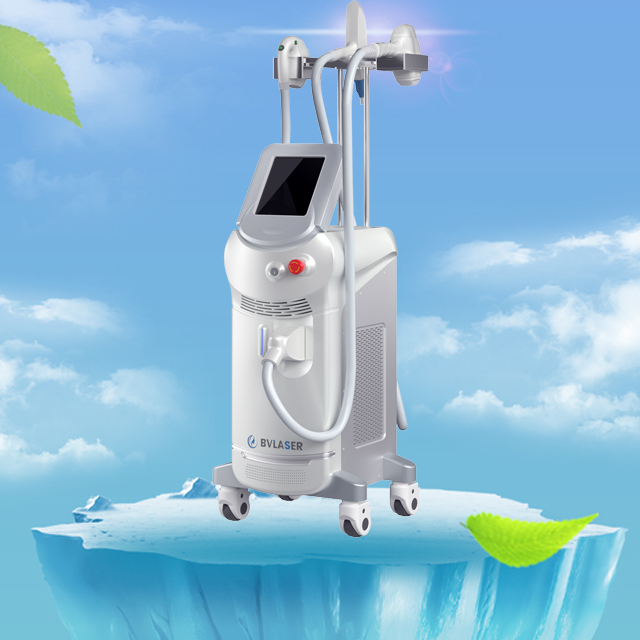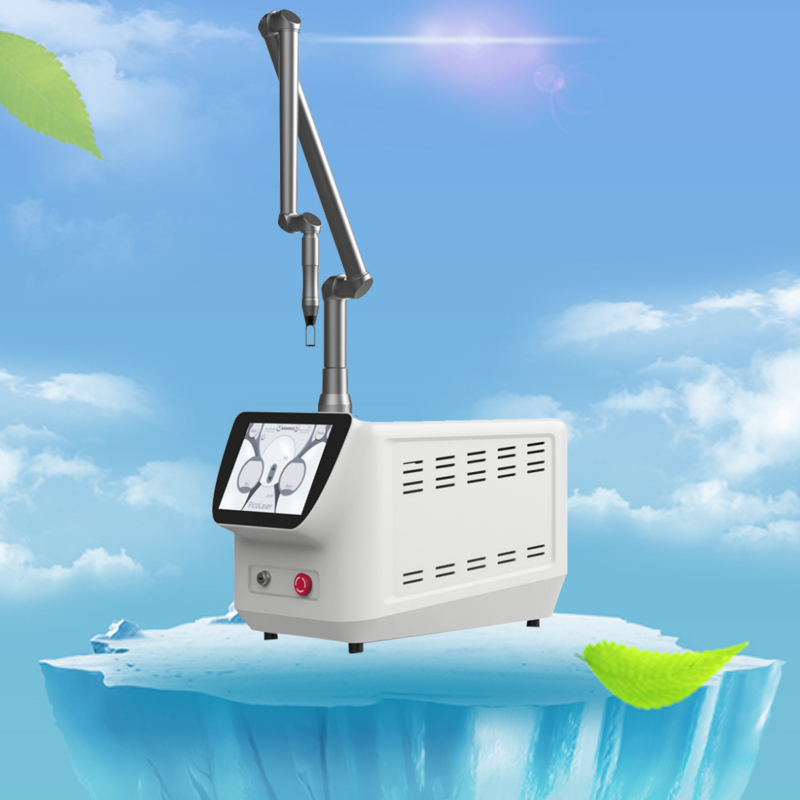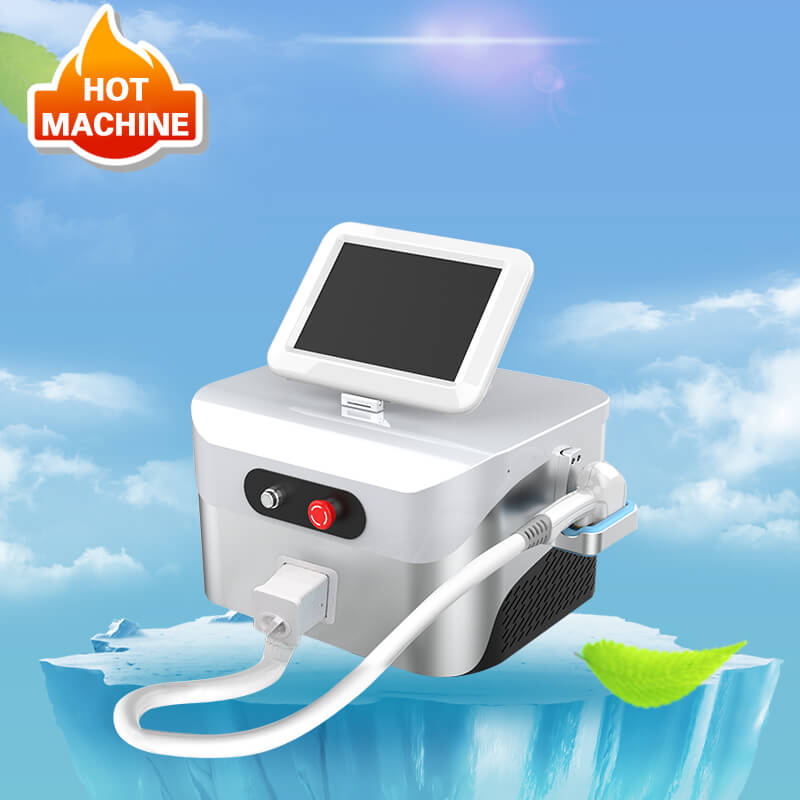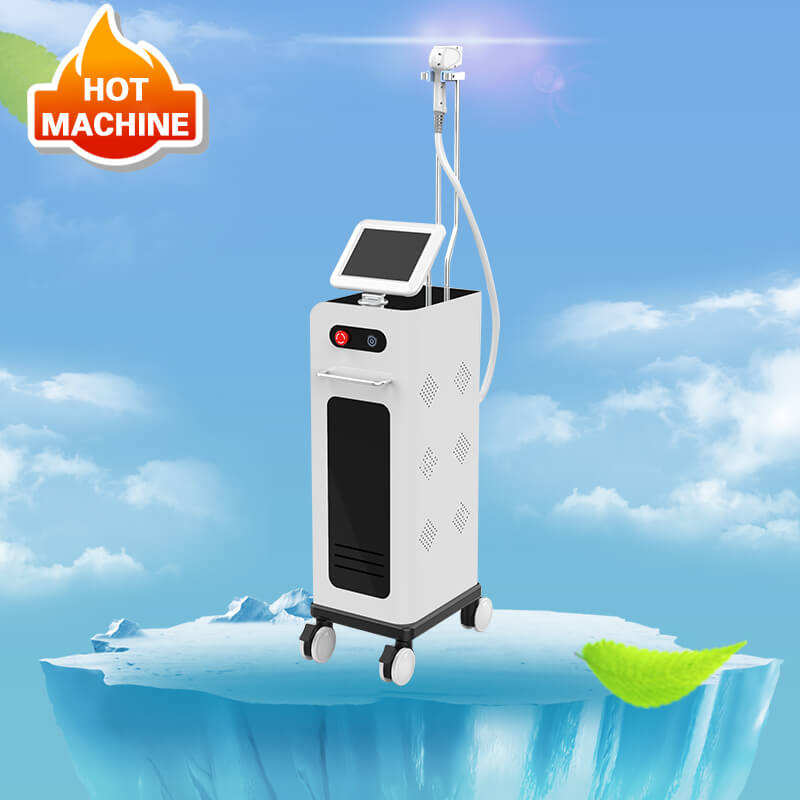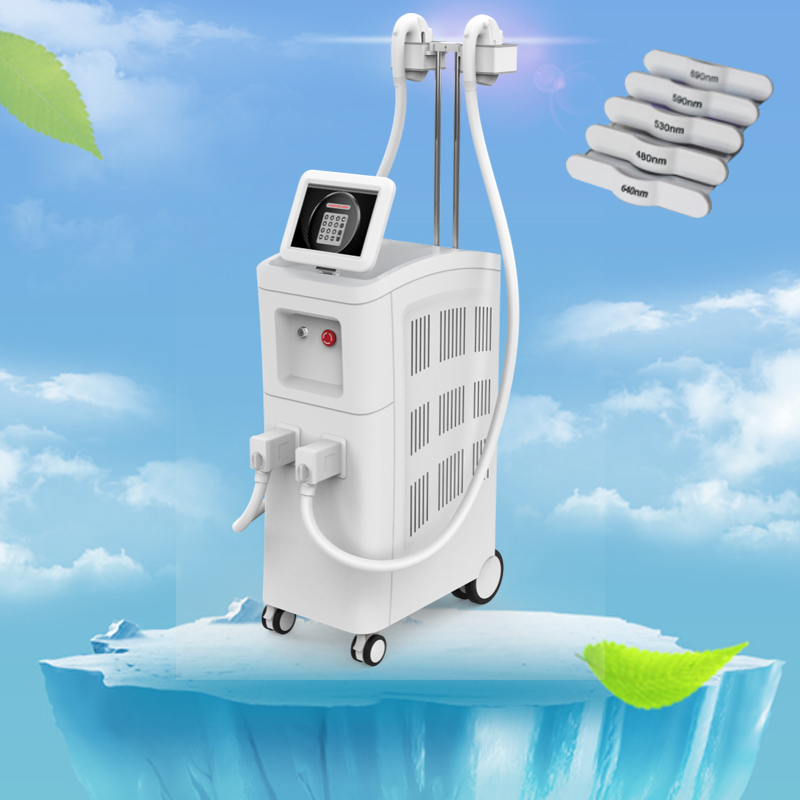IPL Photo Facial Rejuvenation
Author:baishilf Time:2025-07-08 15:19:01
IPL Skin Rejuvenation Machine is indicated for the cosmetic reduction of sun-induced skin damage and aging, including superficial pigmentation (brown spots) and telangectasias (broken blood vessels). Practically any area can be treated, including face, neck, chest, back and hands.
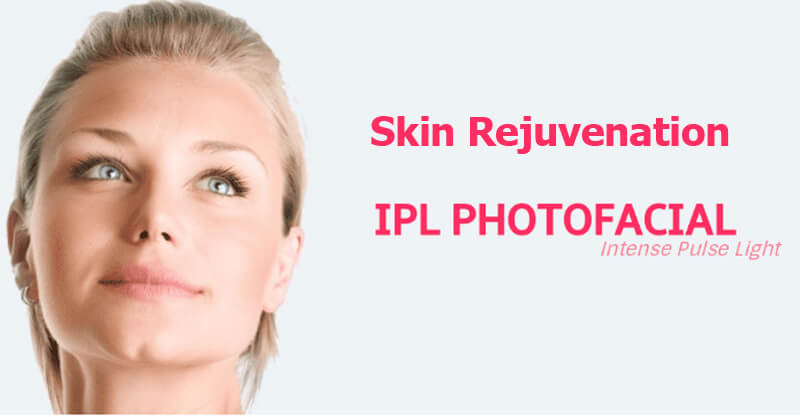
All light based Skin Rejuvenation treatments work by converting light energy from the IPL to heat the treated area. This heat stimulates the formation of collagen and elastin which tighten the skin, lightens pigmentation, reduces telangectasias, and ultimately – after a series of treatments – improves over-all skin tone, texture, and appearance. Immediately after treatment, mild redness and slight swelling of the skin may be present. This will typically disappear over the next hour or so. Treatments of the same area are typically done after 3-4 weeks. Typically, a minimum of 5-6 treatments are required for optimum results.
What Can You Expect Before and After IPL Treatment?
*Before Your Treatment
Avoid excessive sun exposure, tanning beds, or sunless tanning creams for at least 2 weeks prior to your appointment. Patients with a history of excessive hyperpigmentation may use a skin lightening agent or topical hydroquinone 2 weeks prior to treatment in the proposed treatment area.
*After Your Treatment
A broad spectrum (UVA/UVB) sunblock, SFP 30 or greater, should be applied to the treated area(s) whenever exposed to the sun. If persistent redness, swelling and/or discomfort are noticed, apply a cold compress or ice pack intermittently. Avoid exposure to heat – such as hot tub or sauna – until the discomfort has completely resolved. If symptoms do not improve, or worsen, contact dermatologist immediately. If you notice blistering, crusting, drainage, or any other symptoms that concern you, contact dermatologist immediately.
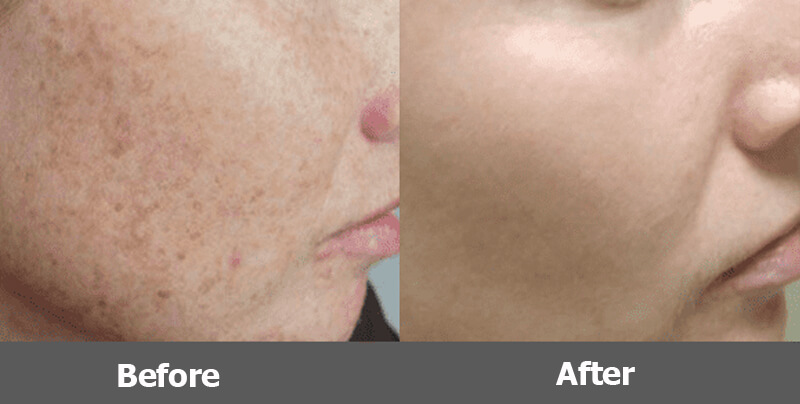
What Should you Look for in an IPL Practitioner?
The treatment should be performed by a registered nurse (RN) or physician who’s trained to operate a laser. Different treatment choices must be made for each patient. Side effects such as skin discoloration can result if the laser is operated by an inexperienced practitioner.
IPL Photo Facial Rejuvenation is a safe procedure but there are some risks. Some people may experience the following:
*Burns: Blisters and burns are rare but occasionally occur. Very rarely, burns may become infected.
*Scarring: Objectionable scarring is very rare, but scars are possible.
*Pigmentation: Pigment changes may occur – either darker or lighter than your natural skin color. They usually resolve spontaneously but may take several months to resolve.
The skin benefits of IPL intense pulsed light
IPL skin rejuvenation is a non-invasive light therapy treatment that uses very brief pulses of extremely bright light to treat various skin conditions, including sun damage, rosacea, age spots, pigmentation, fine wrinkles and unwanted hair. IPL is not exactly the same as a laser because it uses a range of light wavelengths rather than just one. This means IPL therapy is good for general skin rejuvenation, which may involve treatment of capillaries, freckles, wrinkles and hair removal all at once. However, for convenience, IPL is often referred to as a type of laser treatment.
What skin conditions does IPL treat?
Due to its wide range of wavelengths, pulse duration and intensities, IPL treatments can effectively treat a range of skin conditions and frequently more than one condition in any given treatment session.
Rosacea
By targeting blood vessels IPL therapy can help reduce the redness and “spider veins” associated with rosacea. This improves facial appearance but may also reduce blood flow through the skin, resulting in fewer inflammatory symptoms such as flushing, skin sensitivity, pimples and dry eyes.
Sun damage
Sun exposure over a long period results in changes to skin pigmentation, blood vessels and texture, including:
*Fine and coarse wrinkles.
*Pigmented spots on the hands, face and chest (known as lentigines, but also sometimes called liver spots or age spots).
*Rough and “bumpy” skin, known as poikiloderma when it affects the chest and neck.
*Changes to small vessels in the skin, leading to a network-like appearance, or distinct lines on the cheeks, chin and nostrils.
Most of these features of sun damage can be treated effectively with IPL.
Severely sun-damaged skin with skin cancer or multiple solar keratoses can benefit from IPL photodynamic therapy, which combines a topical medication (aminolevulinic acid) with intense light, leading to a resurfacing of the treated area.
Age spots, birthmarks, freckles
Age spots, freckles, liver spots, lentigines and many birthmarks are collections of pigment in the superficial layers of the skin. This type of spot responds to IPL due to its activity on skin pigments.
Spider veins
Fine capillaries in the skin, often called spider veins, respond well to light treatments such as laser and IPL for broken capillaries because they are very close to the surface of the skin. Treatment is especially effective in fair-skinned individuals since IPL works best when there is a clear difference between the redness of the unwanted spider veins and the pale surrounding skin.
Loose skin and fine wrinkles
While IPL SHR machine is especially useful for reducing pigmentation in the skin, the heat it generates can stimulate cell turnover and collagen production in the skin. This can have the effect of tightening areas of loose, crepey or lax skin and smoothing fine wrinkles.
Hair removal
IP hair removal is useful for treating large areas of unwanted hair on the body. It’s most effective when treating dark hair on a fair-skinned person.
Melasma
Melasma is a skin condition causing generalised pigmentation, usually on the face, although it can occur on different areas of the body. Melasma is triggered and exacerbated by both heat and light. Some types of laser treatment are able to treat melasma, but with IPL there’s a risk of making the condition worse so it isn’t usually used for the treatment of melasma.
Are there side effects and risks of IPL light treatment?
Because of the extremely bright light and high temperatures generated during treatment, IPL carries some risks if it isn’t practiced carefully. No specific training or qualifications are required for a person to operate a laser or IPL device and provide services to the community. There is potentially a higher risk of side effects if treatment is performed by an unqualified individual. IPL and laser treatment should always be performed by a dermatology professional (doctor, nurse or dermal therapist) with training and qualifications in laser safety. Spot Check Clinic staff have these qualifications.
The most common side effects of IPL treatments are temporary and not medically serious. They can occur due to incorrect treatment parameters, incorrect use of safety equipment (e.g. goggles), and patient factors such as sensitivity to light or recent sun exposure or use of topical irritants. These causes are usually predictable and avoidable.
*Burns
The heat of IPL treatment can cause burns, resulting in swelling, redness and blisters. These are usually minor and localised, although in certain circumstances they are more widespread and an expected effect (e.g. following photodynamic therapy for skin cancer or sun-damaged skin). Burns are usually treated successfully with topical hypochlorous acid and a course of low level light therapy, which speeds healing and reduces the risk of scarring.
*Inadvertent treatment of melanoma
Some pigmented spots are melanomas or other pigmented skin cancers. A possible serious complication of IPL treatment could be inadvertent treatment of a melanoma. This could alter the appearance of the melanoma from the surface so that it is no longer easily noticeable. However, melanoma cells could potentially continue to multiple in deeper levels of the skin, eventually spreading to other parts of the body and causing serious illness or death. It’s essential to have any pigmented skin lesion examined by an experienced doctor to rule out melanoma before having it treated with laser or IPL.
*Pigmentation changes
IPL treatments can cause an Increase in pigmentation due to activation of melanocytes (pigment-producing cells) by light or heat. This reaction is more common in people with melasma or darker skin types (Fitzpatrick type IV or higher). The risk can be reduced by treating with less intensity over a greater number of sessions. In practice, this treatment may not be sufficient to lead to a good cosmetic effect. Better results are usually achieved with a specialised laser that uses extremely brief pulses of light that “shatter” rather than “burn” pigment in the skin.
*Infections
The most common infection following IPL or laser treatment is cold sores. The intense light and heat of the treatments can reactivate HSV, the cold sore virus, which normally lies dormant between outbreaks. Dermatologist always ask if you have a history of cold sores. If concerned that you may experience an outbreak of cold sores, provide a dose of anti-HSV medication prior to your treatment.
*Scarring and bleeding
Scarring and bleeding following IPL treatment is rare following IPL treatments since they don’t penetrate deeply into the skin. Scarring could potentially result from severe burns, which are seldom seen with IPL.
What are the benefits of IPL skin therapy?
The benefits of IPL skin therapy include:
*Fading of pigmentation and pigmented skin lesions such as freckles, age spots, lentigines.
*Destruction of superficial blood vessels, capillaries and spider veins, as well as small superficial vascular lesions such as angiomas, Campbell-de-Morgan spots, strawberry naevi and small vascular birthmarks.
*Fading of the redness and inflammation of rosacea, which may also lead to reduction in symptoms of skin sensitivity and tenderness, flushing and dry or itching eyes.
*Tightening of loose skin and reduction of fine wrinkles.
*Reduction in unwanted hair.
*An overall improvement in the appearance of sun-damages skin, leaving it smoother tighter and clearer.
*IPL is often less painful than laser or skin resurfacing treatments with minimal downtime. Many of our patients attend for a treatment and then go straight back to work.
How long does IPL skin treatment last?
The results of PL skin treatment can last several months to a year. However, it is important to note that the duration of results can vary depending on various factors including:
*Severity and extent of the sun damage or skin lesions treated.
*The individual’s skin type.
*Exposure to sunlight following treatment.
*Use of topical treatments (e.g. tretinoin, niacinamide and vitamin C) or prescription rosacea treatments which may enhance the benefits of IPL skin rejuvenation treatments.
To maintain optimum results, most maintenance treatments are usually required in the years following an initial treatment course. In general, maintenance treatments usually require fewer sessions and cost less than an initial treatment course.
Choosing the right skin treatment for your condition
If you are considering IPL skin rejuvenation or laser treatment, it is important to consult with a doctor or nurse experienced in dealing with skin conditions and skin cancers. IPL is an excellent treatment for many skin conditions, but you can often achieve even better results if it’s combined with a good skincare routine and sometimes with prescription medical treatments. It’s best to rely on the knowledge and expertise available at a medical clinic to help you choose a treatment that best suits your skin type, treatment preferences, medical history, skin cancer risk factors and cost constraints.





